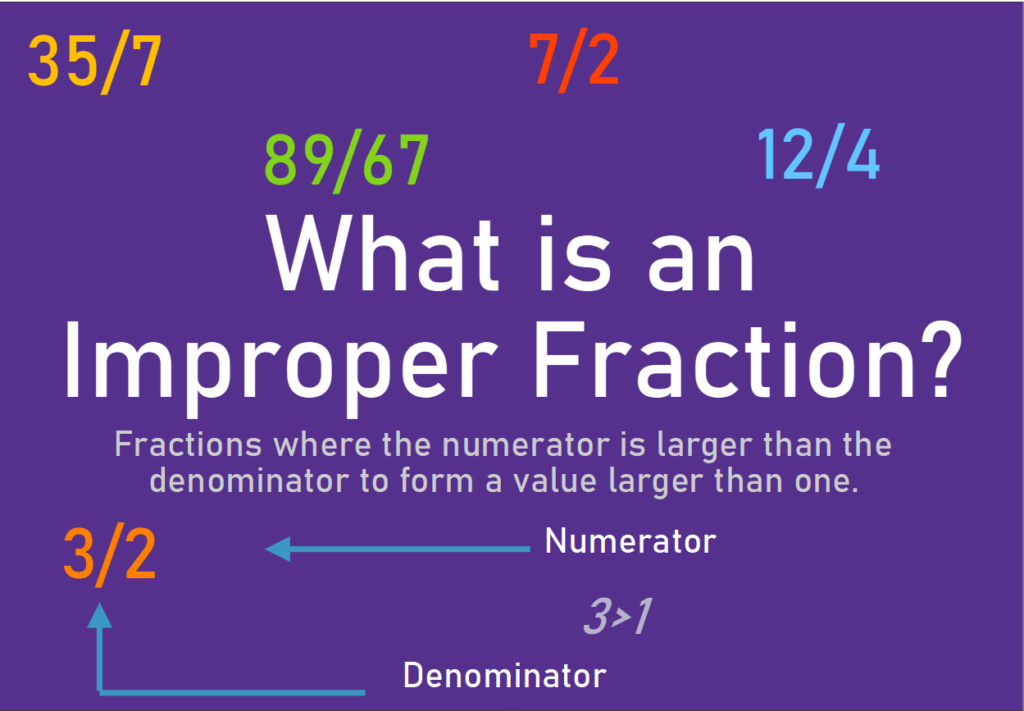
What is an Improper Fraction?
There are many fractions, and one classification or type of these numbers is an improper fraction. We will cover this in the following article!
Unsure what a fraction is? Check out What is a fraction?
The Key Information
First, some examples of improper fractions are:
- 6/3
- 123/46
- 89/21
Looking at the examples, you can tell that there is a pattern: The numerator is larger than the denominator.
What to do with Improper Fractions
What does this mean? Most fractions are not improper, as the name hints. Most have the numerator smaller than the denominator, which is saying that the fraction values less than 1 because the denominator is larger than the numerator and cannot fit fully once into the numerator. On the other hand, because the numerator is larger than the denominator in an improper fraction, the value of the fraction is larger than 1.
For instance, in the first example above: 6/3, the value is 2, larger than 1. This is because the denominator is able to fully fit into the numerator more than once (in this case, 2 times) since the numerator is larger than the denominator.
However, improper fractions are therefore not often written as the final answer, some conversions are made to make them simpler (although in some cases, you will find it is easier to write final answers as just improper fractions). To find out how this works, check out Converting to Mixed Numbers.